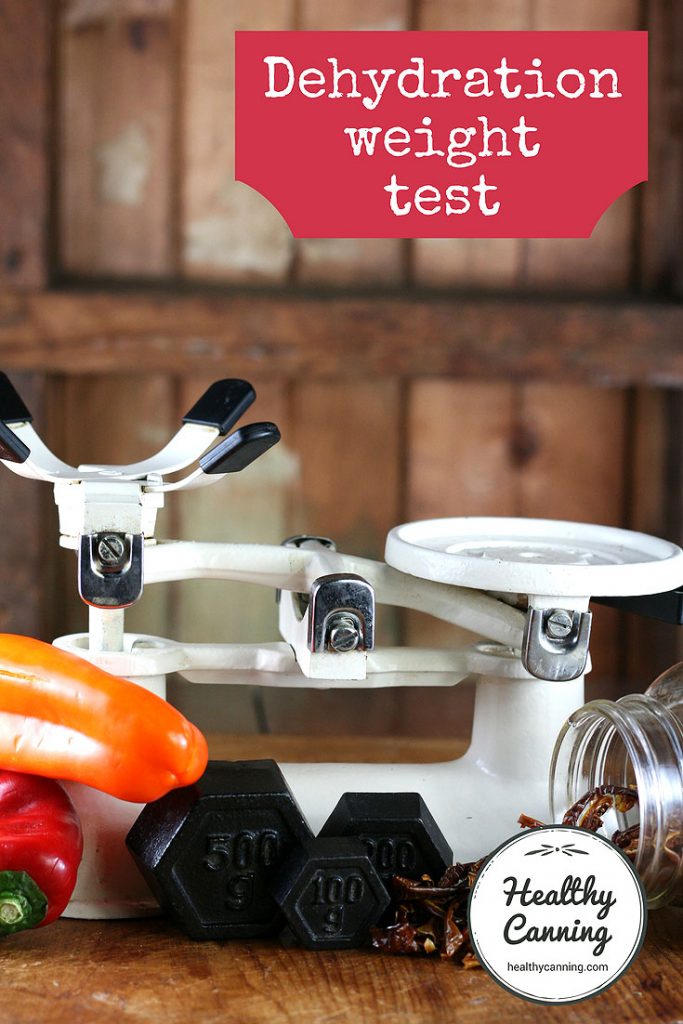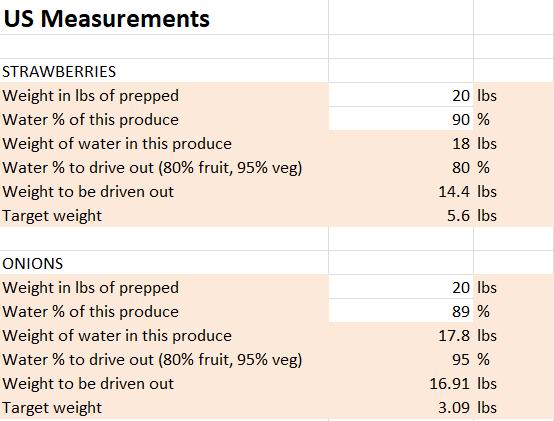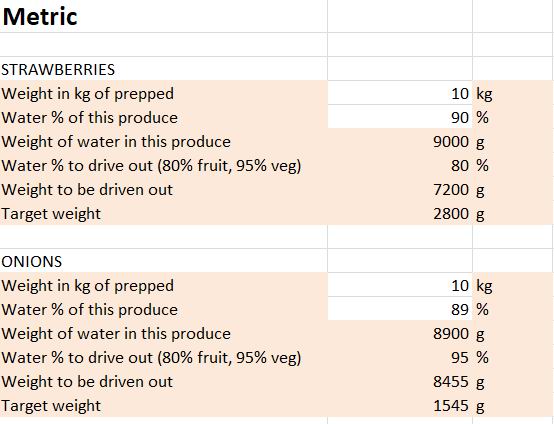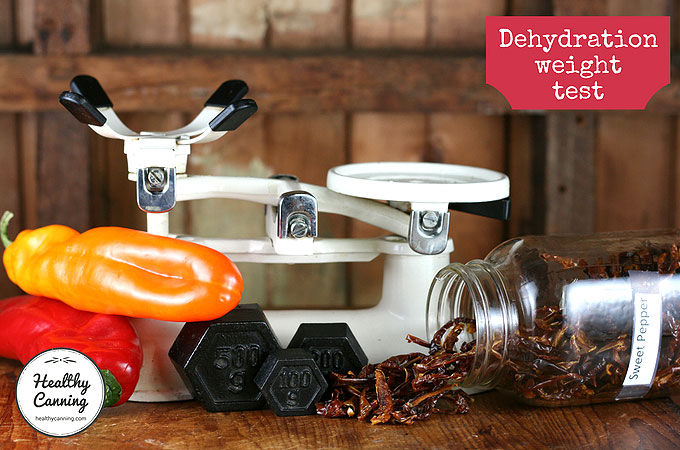The dehydration weight test is a method of determining “dryness” based on comparing before and after weights of the produce you are drying. It’s used in industry; the Ball Blue Book brings a simplified version of it to us as home users.
You use a set of kitchen scales to weigh the dried produce to see if you’ve driven enough water yet out of it.
Phyllis Hobson, author of Making and Using Dried Foods, says:
Well-dried foods will vary from a [residual] moisture content of 5 percent for leafy vegetables, such as spinach, to 25 percent for juicy acid fruits, such as apricots. Percent of moisture may be checked by weighing the product before and after drying. For example, a food weighs 16 ounces (400 g) before drying. After 8 hours of drying, the food weighs 8 ounces (200 g). In this case you have 50 percent reduction in weight by the removal of moisture. Continue drying until there is no further reduction of weight… Most fruit should have about 20 percent moisture content [left]when dried, while vegetables will have about 10 percent moisture.” [1]Hobson, Phyllis. Making and Using Dried Foods. North Adams, MA: Storey Publishing. 1994. Page 21.
The guidelines
Here are the guidelines. Don’t worry if they don’t sink in: for most of us, these kinds of abstract rules never make any sense until we see them in action, so an example will quickly follow to bring the guidelines to life.
- First, wash, peel, core, stem, seed, etc the produce as directed (but don’t blanch yet.)
- Prepped produce weight: Weigh the prepped produce.
- Water percentage: Refer to water percentage for that particular produce provided in Ball’s dehydrating directions (or see compiled chart below), and make a mental note of that.
- Water weight: Multiply the prepped produce weight by that water percentage, to arrive at how much of that prepped produce weight is water.
- Water percentage to drive out: For fruit you need to drive out 80% of the water; for veg; it’s 95%.
- Weight to get rid of: Multiply the water weight by the water percentage to drive out. The resulting number represents the weight you want to get rid of.
- Final Dried Target Weight: Take the prepped produce weight, and subtract from it the weight to get rid of. You now have the target weight that you will be aiming for to know that the produce is perfectly dehydrated.
Examples
Here are two examples: strawberries (a fruit) and onions (a veg). First, in US measurements, then repeated in metric.
For fruit, you want to drive out 80 % of the water weight; for veg, 95 % .
Water content table
| Produce Item | Water % |
|---|---|
| Apples | 84 % |
| Apricots | 85 % |
| Asparagus | 92 % |
| Bananas | 76 % |
| Beans -- Green, string, wax | 90 % |
| Beets | 87 % |
| Blueberries | 83 % |
| Carrots | 88 % |
| Cherries - Sour | 84 % |
| Cherries - Sweet | 80 % |
| Coconut | 51 % |
| Corn | 73 % |
| Grapes | 81 % |
| Leeks | 89 % |
| Mushrooms | 90 % |
| Nectarines | 82 % |
| Okra | 89 % |
| Onions | 89 % |
| Peaches | 89 % |
| Pears | 83 % |
| Peas | 78 % |
| Peppers - Sweet | 93 % |
| Peppers - Hot | 93 % |
| Pineapples | 86 % |
| Plums | 87 % |
| Popcorn | 73 % |
| Potatoes - Sweet | 71 % |
| Potatoes - White | 80 % |
| Pumpkin | 90 % |
| Prune Plums | 79 % |
| Rutabaga | 87 % |
| Strawberries | 90 % |
| Tomatoes | 94 % |
| Turnip | 92 % |
| Yams | 71 % |
| Zucchini | 94 % |
Src: Assembled from Ball Blue Book. Edition 37. 2014. Pp 164-167.
Source
Ball Blue Book. Muncie, Indiana: Healthmark LLC / Jarden Home Brands. Edition 37. 2014. Page 163.
References




